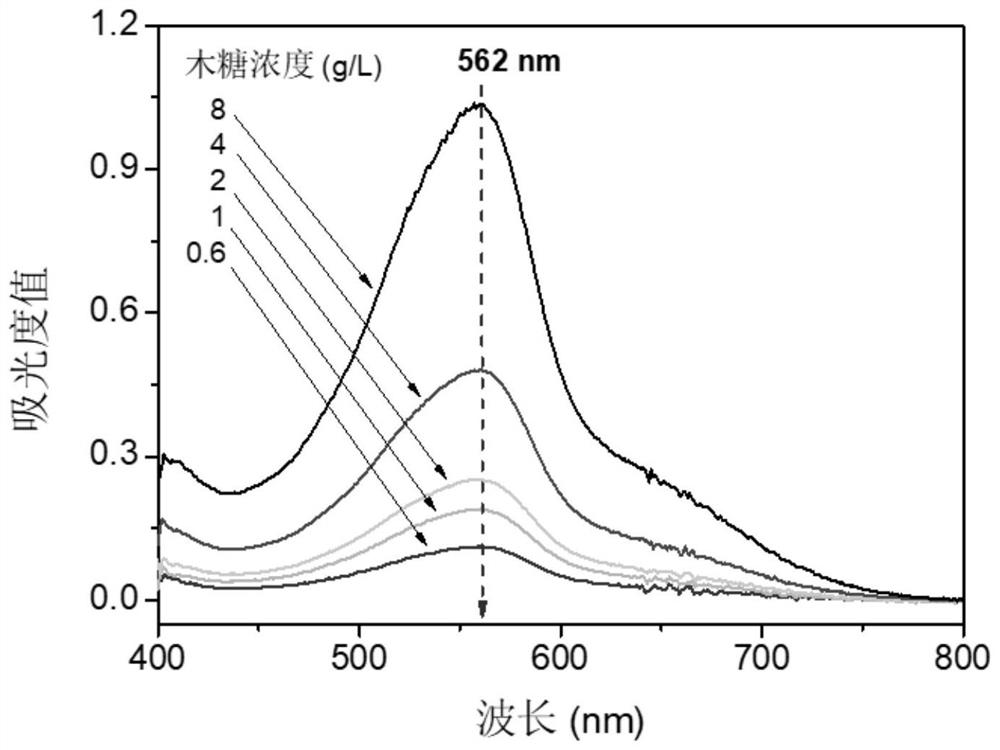A method for determining the concentration of water-soluble peanut protein in a solution containing reducing monosaccharides
A protein concentration and measurement method technology, applied in the field of determination of water-soluble peanut protein concentration, can solve the problems of inaccurate accuracy, inaccurate concentration of reducing sugar, large difference in molar absorptivity, etc.
- Summary
- Abstract
- Description
- Claims
- Application Information
AI Technical Summary
Problems solved by technology
Method used
Image
Examples
Embodiment 1~5 and comparative example 1~5
[0068] A method for measuring the concentration of water-soluble peanut protein in a solution containing reducing monosaccharides, using defatted peanut powder extract as a test sample, comprising the following steps:
[0069] (1) Preparation of defatted peanut powder extract:
[0070] First, add a certain volume of acetic acid-sodium acetate buffer solution and a certain quality of hemicellulase into the Erlenmeyer flask, shake fully to dissolve the three enzymes completely;
[0071] Then, add a certain amount of defatted peanut powder to the triangular flask, and plug the triangular flask tightly with a rubber stopper;
[0072] Finally, place the corked Erlenmeyer flask on an air bath shaker for protein extraction.
[0073] After the extraction, the solid-liquid mixture is centrifuged, and the supernatant is taken as the crude extract of defatted peanut powder.
[0074] Among them, the defatted peanut powder is the peanut meal obtained by dry-pressing peanut oil, which is ...
PUM
 Login to View More
Login to View More Abstract
Description
Claims
Application Information
 Login to View More
Login to View More - R&D
- Intellectual Property
- Life Sciences
- Materials
- Tech Scout
- Unparalleled Data Quality
- Higher Quality Content
- 60% Fewer Hallucinations
Browse by: Latest US Patents, China's latest patents, Technical Efficacy Thesaurus, Application Domain, Technology Topic, Popular Technical Reports.
© 2025 PatSnap. All rights reserved.Legal|Privacy policy|Modern Slavery Act Transparency Statement|Sitemap|About US| Contact US: help@patsnap.com



